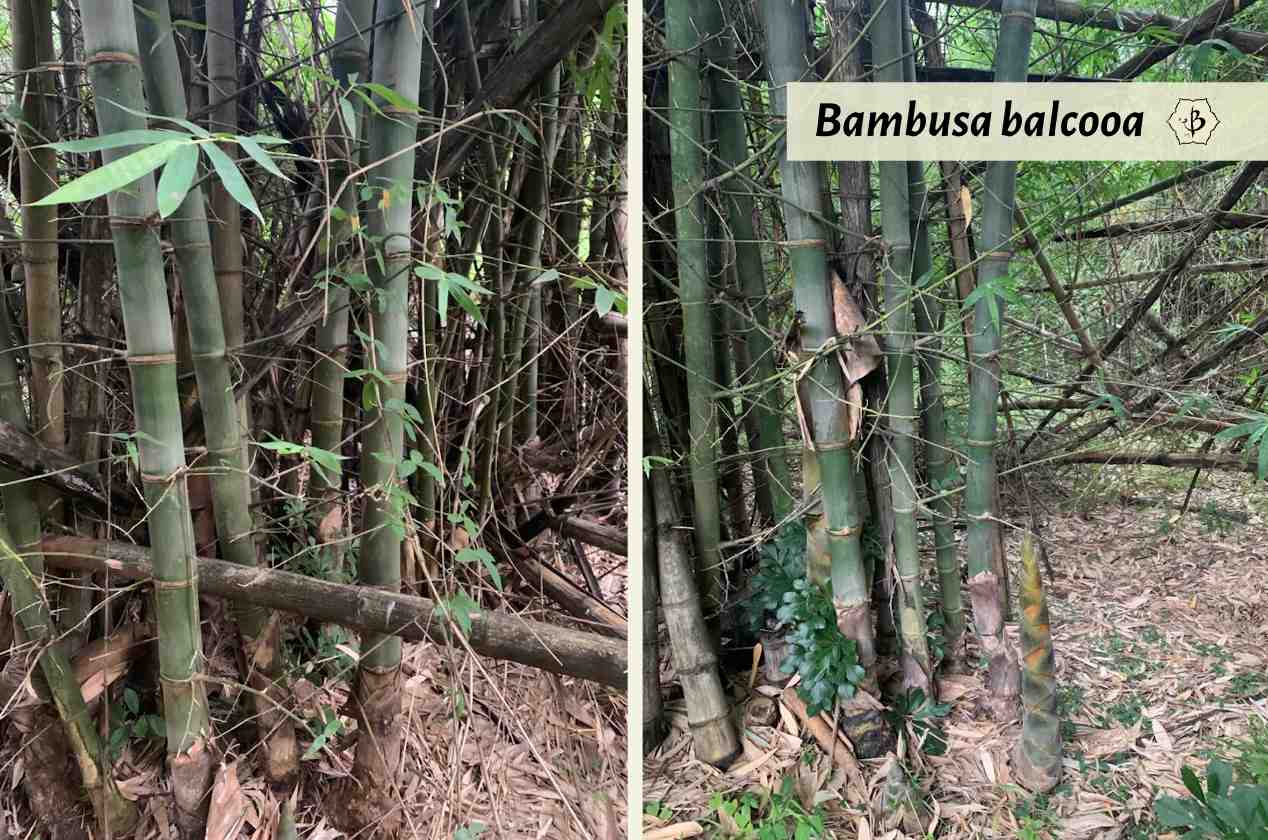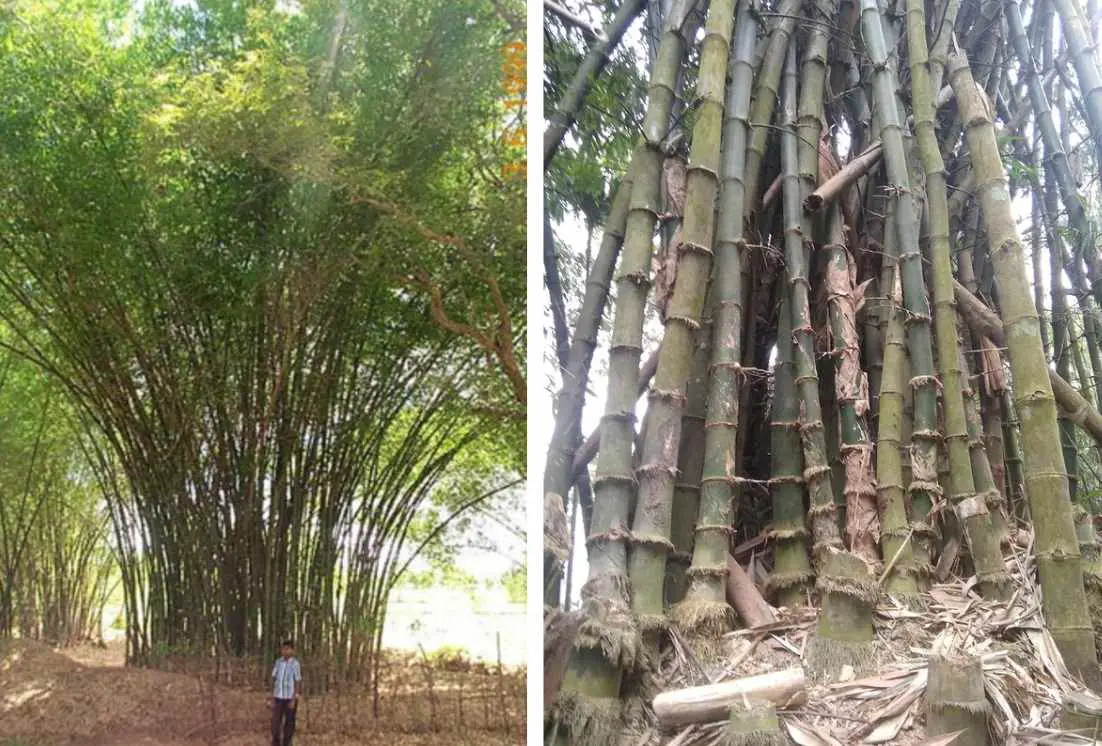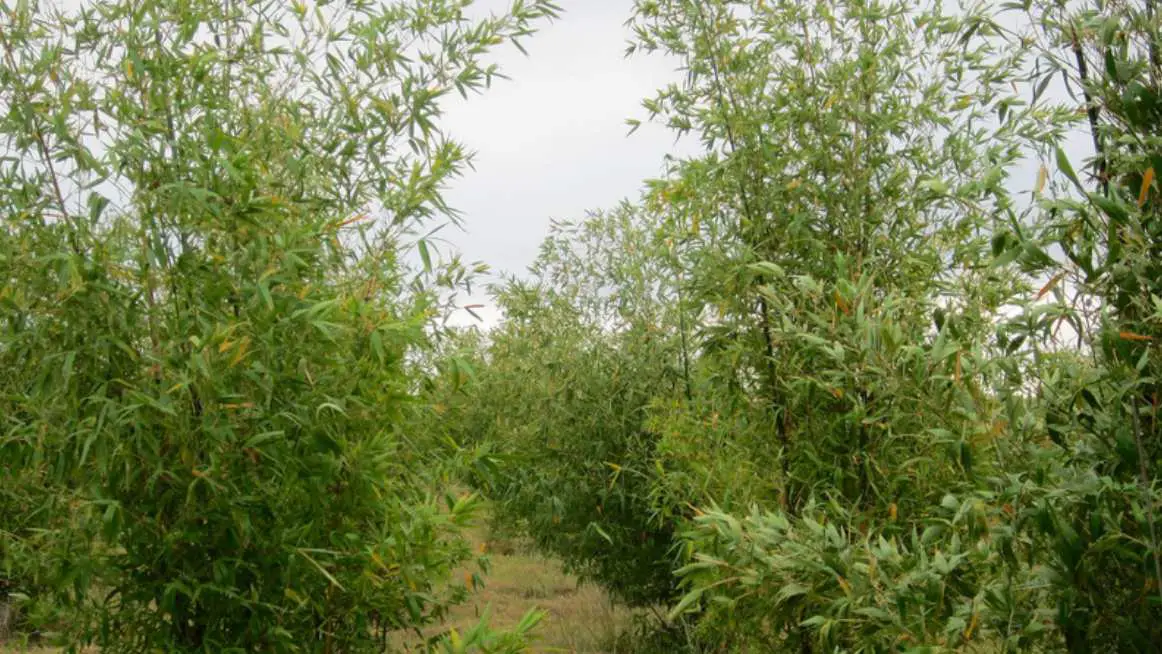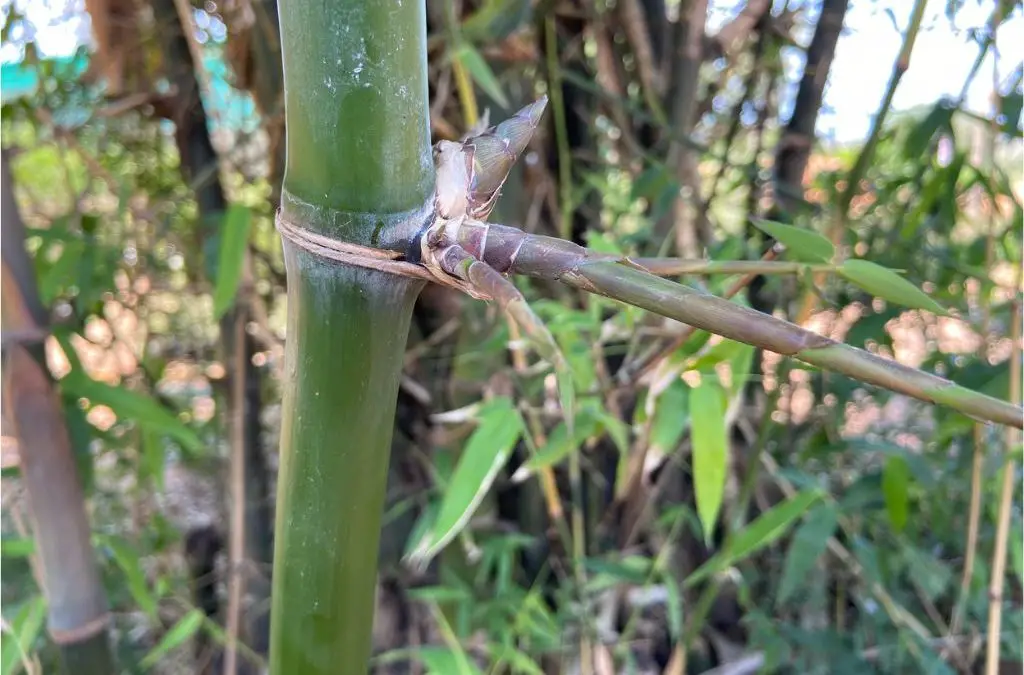Looking for the optimal species of bamboo to save the planet? With more than a thousand species to choose from, it’s hard to know the best bamboo for capturing carbon, generating oxygen, or producing a robust building material. To select the best bamboo, you also need to consider your climate and what you ultimately want from your bamboo. If you live in a tropic or subtropic habitat, and you want some massive bamboo you can work with, then Bambusa balcooa might be your best bet.
Bambusa balcooa, also called Beema or Female bamboo, is one of the best bamboo species for building or producing biomass. Native to India and Southeast Asia, B. balcooa does best in tropical climates, where it can grow to 60 or 80 feet tall. The species is also cultivated in Africa and Australia, where it’s prized for its massive shoots with unusually thick culm walls. However, prolific branches make balcooa more difficult to work with than varieties like D. asper.
This article — first published in December 2021 and most recently updated in March 2024 — is part of an ongoing series about various bamboo species. Check out some of these other links to learn more.
Characteristics of Bambusa balcooa
Bambusa is a genus of clumping bamboo that includes more than 100 tropical and subtropical species. Most of these bamboo varieties are medium to large in size, with Bambusa balcooa being one of the largest of all. Culms commonly grow 50 to 80 feet in height, with a diameter of 3 to 6 inches. The clumps can form dense thickets up to 15 or 20 feet across.
Like most members of this genus, B. balcooa has numerous branches at each node. Most of the larger branches occur in the upper half of the plant. The lower nodes sometimes have smaller, thorn-like branches, which can give the towering clump an uninviting appearance.
More important than their imposing size, the individual stalks of this bamboo species have particularly thick culm walls. This thickness makes the poles especially strong, resistant to cracking, and useful for building. Unlike some species of Dendrocalamus or Guadua, however, the culms are not perfectly straight, so they are less than ideal for more elegant construction projects. But the thickness results in a greater quantity of biomass per culm, which is a valuable property for generating fuel, energy, or pulp for paper.

NOTE: “Beema” is a specific strain of the B. balcooa species, developed and cloned by Dr. N. Barathi of Growmore Biotech. Barathi’s statistics are based on his particular cultivar and may not always apply to the general species.
Climate and habitat
B. balcooa is believed to originate from Northeast India, from the same region as Dendroclamus strictus or Calcutta bamboo, which is sometimes called Male bamboo. These are sterile bamboo varieties which do not produce viable seeds.
In order to flourish, this species of bamboo requires a tropical habitat, warm and humid like Vietnam or South Florida. It is cold-hardy down to about 25 or 30º F, so it can survive in places like Southern California, but it won’t necessarily thrive there. And it’s not the most attractive species, as far as ornamental bamboo goes.
Flowering cycles
Beema bamboo, as it’s commonly known in India, flowers gregariously, meaning that all of the plants flower at once. All of the flower-producing culms will die off when this happens, but the rest of the plant will survive. For farmers who cultivate this species commercially, this is an advantage over other bamboo varieties which flower gregariously and then go to seed and die off en masse.
The seeds of B. balcooa are sterile however, and will not produce new plants. This is one of three sterile species of bamboo in India, meaning that they don’t produce viable seeds. Instead, the plants must be propagated through cuttings or micro-tissue culture. When propagating this way, it’s important to clone from young, virile culms to get the best results.

Cultivating Bambusa balcooa
Its formidable size and density make B.balcooa a popular species for commercial cultivation. Like most bamboo, this variety does not require rich soil, and it grows quite quickly. It should produce full-sized shoots within 5 or 6 years. Shoots that come up in the earlier years might only reach half of their full size.
Thick and massive culms make this a useful species for many applications. Building and construction are the most common uses, although the culms aren’t perfectly straight, so they typically lend themselves to more rustic structures. The high levels of biomass also make it an ideal feedstock for producing energy or biofuel.
By the same token, this hefty bamboo can generate prodigious quantities of pulp for paper. In India, craftspeople sometimes split and separate the bamboo into strips and weave them into baskets and floor mats. The fresh shoots are also edible, though not as frequently grown for that purpose, compared to varieties like Moso (Phyllostachys edulis).
India is the primary producer of B. balcooa worldwide. If you’re trying to get your hands on starts or harvested poles, contact Growmore Biotech. Based in Southern India, they’ve been shipping Beema bamboo plants and products around the world for more than 20 years.
The featured photo, at the top of this article, shows a young grove of Bambusa balcooa planted by EcoPlanet Bamboo in South Africa. Farmers in northern Australia have also been growing this species of timber bamboo for its many uses. Along with Dendrocalamus asper and Bambusa vulgaris, it’s one of the more popular bamboos for farming.

3 Ways to grow B. balcooa
Depending on what you want from your bamboo farm, there are basically three different strategies for cultivating this species. And you might consider similar options if you’re planning to farm other tropical timber bamboo like Guadua or D. asper.
PLEASE NOTE: The following numbers come from Growmore Biotech who propagate and promote their own strain of Balcooa which they call Beema Bamboo. Everyone I know who grows tropical timber bamboo maintains a density between 100-200 plants per acre (250-500 plants per hectare), generally cultivated for poles and building material.
- High-Density Farming: 1,000 plants per acre, with plants spaced 4 feet apart in rows 10 feet apart. First harvest after 3 years. Uses include biomass such as power generation, bio-CNG, bio-ethanol, bio-diesel, activated charcoal, and stakes for gardens and banana plants.
- Medium-Density Farming: 500 plants per acre, with plants spaced 7 feet apart in rows 12 feet apart. First harvest after 4 years. Uses include paper pulp, furniture, timber, banana stakes, and handicrafts.
- Low-Density Farming: 200 plants per acre, with plants spaced 15 feet apart in rows. First harvest after 5 years. Produces the largest and highest-quality poles, best for use in building and construction.

Maximizing biomass and oxygen production
Dr. Barathi of Growmore Biotech in India has studied this species quite extensively, so there is significant data regarding Beema bamboo’s biomass yields, carbon sequestration and oxygen production. In tropical India, a mature plantation of this species can produce as much as 40 tons of biomass per acre per year. And when they account for leaves and roots, the figure is closer to 50 tons per acre.
The total annual carbon sequestration per acre is 24 tons, according to Barathi, which amounts to 88 tons per acre of total CO2 sequestration. B. balcooa stores 24 tons of carbon, mostly underground, and releases 64 tons of oxygen per acre every year. This is roughly as much oxygen as about 200 humans breathe over the course of a year. That’s why in parts of India they’re turning Beema groves into “oxygen parks” where visitors can luxuriate in the abundance of O2.
Learn more
To learn more about the wide world of bamboo and its many uses and applications, check out some of these other articles.
- Growing bamboo in Africa
- How to make money growing bamboo
- What is timber bamboo?
- The best clumping bamboo species
- Tropical bamboo for Florida and the Deep South
FEATURE IMAGE: Nodal joint of Bambusa balcooa. Photo by Fred Hornaday.


























Very well written article on the Beema bamboo. The extensive information provided are very useful.
Thank you, Dr. B!
My pleasure 😊
Fantastic lecture by Dr. N. Bharati & extensive knowledge on bamboo most of the species. Presented most national and international seminars. Many thanks to him.
Thanks Mr Lingaraj
You are a true Bamboo Ambassador sir. Great information.
Keep sharing